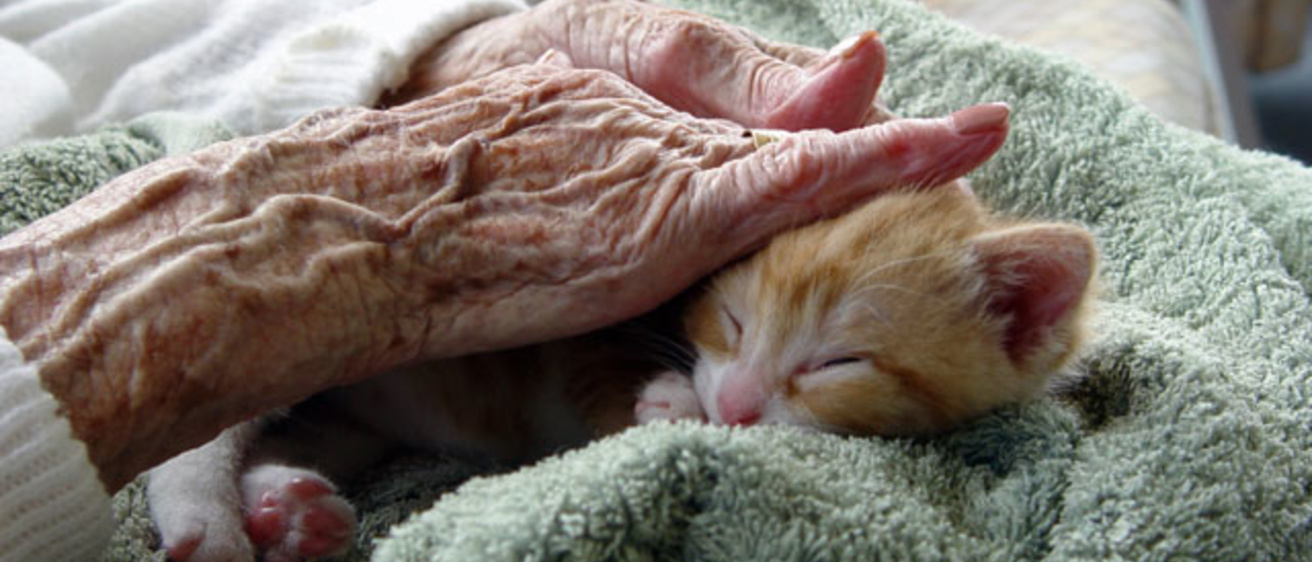A University of Iowa law professor encourages nursing homes to expand their policies so residents can keep pets, and states to change laws and regulations where necessary to make it easier.
“Many studies suggest that interacting with pets has many benefits for residents of nursing homes,” says Josephine Gittler, professor of law at the UI College of Law. “Allowing them to have pets will improve the quality of life of not only the residents, but the animals, too.”
Gittler cites studies that show pets can lower blood pressure, heart rate and anxiety, decrease depression, and increase exercise and cardiovascular fitness. She said pet visitation programs have been shown to lead to increased social interaction by residents, thus reducing their sense of isolation. Residents tend to feel better and even eat better when allowed to have an animal companion, if only for a short time.
Many nursing homes have taken the research to heart and allow pets in their facilities to mingle with residents during supervised visits. But some home administrators are reluctant to allow pets in their facilities full-time, out of concerns for the health and safety of residents, and fears of litigation.
Gittler says some states also have laws and regulations that make it difficult for homes to have animals on the premises for longer periods. She says 18 states have specific regulations about animals in nursing homes, and while some—such as Washington—give nursing home residents the right to have regular contact with animals, others are less open to the idea. For instance, seven states limit the number of animals that can be in a facility at any one time, and five states require the home assign a staff member for each animal.
So Gittler is working with nursing homes and elder advocacy groups as part of the law school’s National Health Law Policy and Resource Center that she directs to reform policies and laws. Gittler is urging nursing homes go beyond part-time visitation and allow pets to live in the facility full-time, either with the residents or as communal pets.
“Residents don’t have enough time to create a strong relationship with an animal that only visits occasionally, which compromises some of the benefits,” she says. “Residents seem to react better when the pet is always available.”
Gittler has discussed the issue at nursing home administrator meetings and reform organizations in Iowa and around the country.
“It can be very traumatic for an elder person to be separated from their pet when they move into a nursing home, and traumatic for the pet, too,” Gittler says. “They’ve spent many years together and formed a close bond that’s suddenly broken, and that’s difficult for both of them. Many times, the resident can’t find anyone to take their pet and it winds up in an animal shelter.”
Gittler suggests nursing homes develop partnerships with animal shelters and veterinarians to find pets that would be appropriate in nursing homes. She also says that nursing homes need to adopt some common sense pet policies addressing such issues as the animal’s temperament, keeping animals away from residents who have allergies, or preventing them from getting underfoot and tripping a resident.
The pets can go beyond the obvious dogs or cats, too. Gittler knows of nursing homes in the U.S. that have a turtle colony, a miniature horse and even a baby kangaroo living on the grounds as pets.
